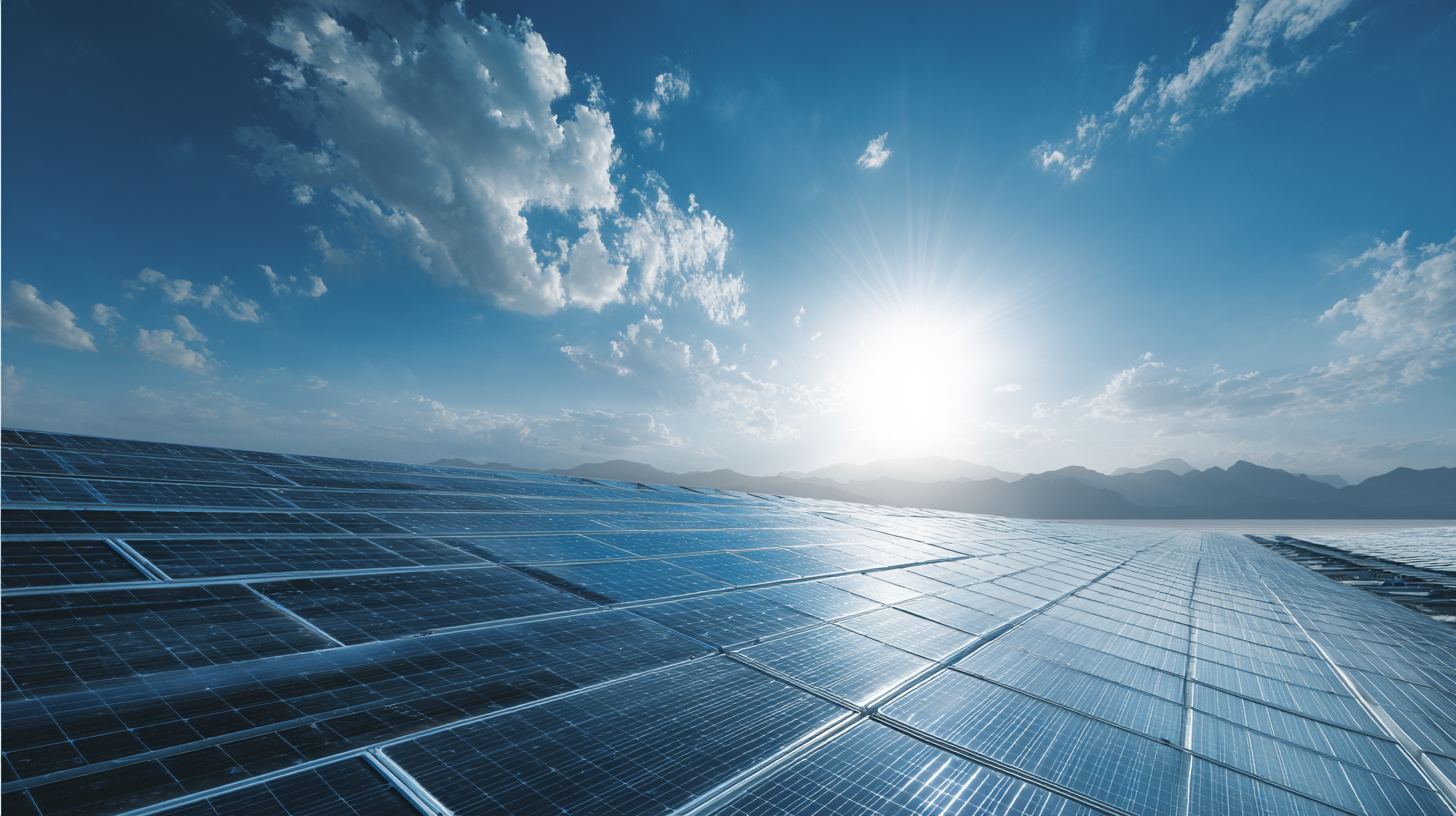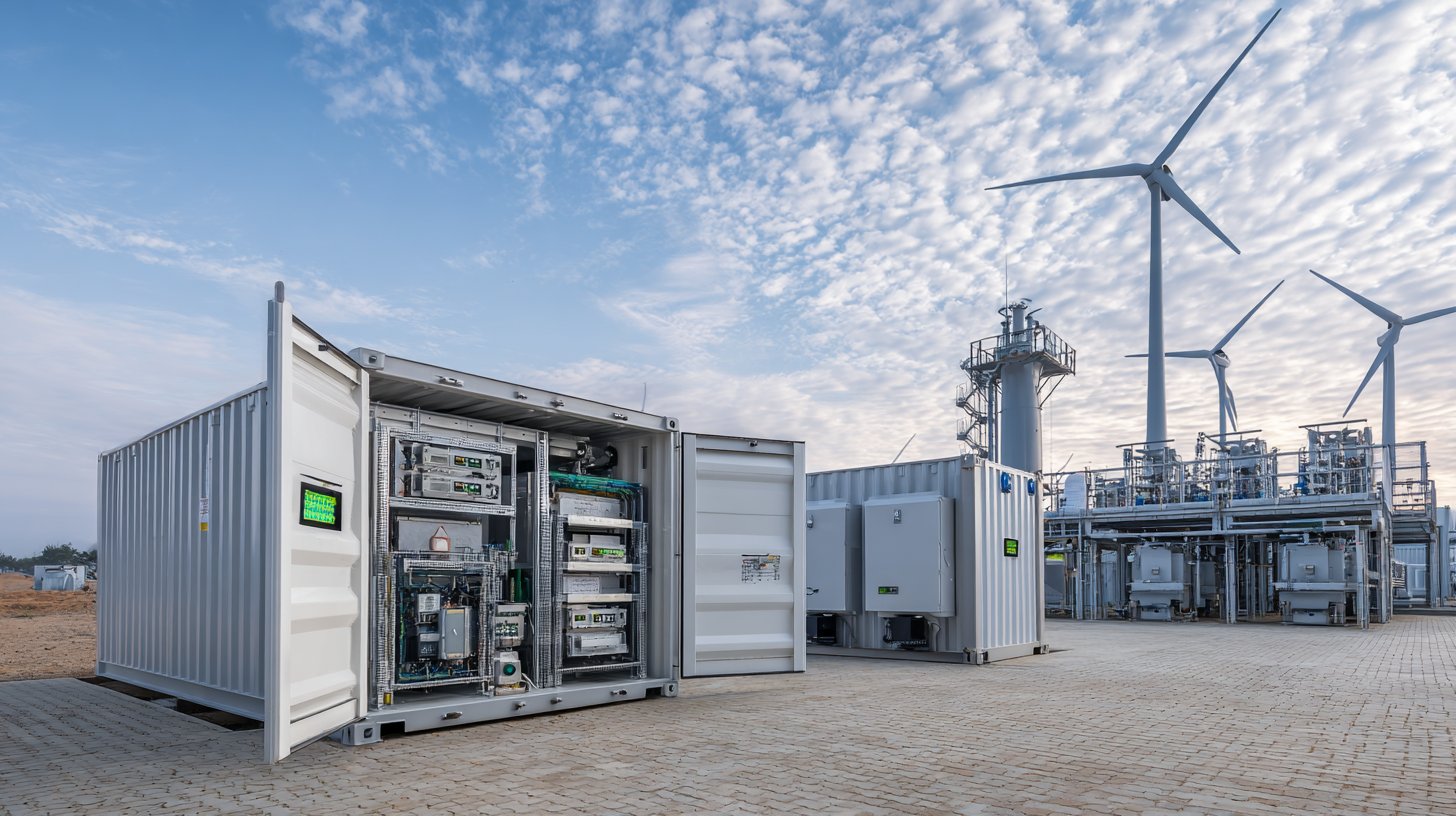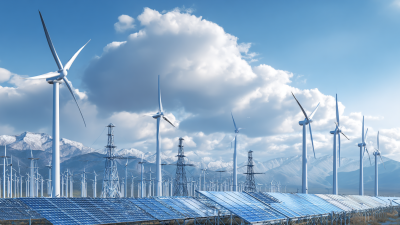Innovative Energy Solutions: Transforming Sustainability for a Greener Future
In today's rapidly evolving energy landscape, the imperative for sustainable practices has never been more critical. According to the International Energy Agency (IEA), global energy demand is set to increase by 30% by 2040, urging a transition towards innovative energy solutions that prioritize sustainability. The need for effective solutions for energy not only addresses environmental concerns but also enhances economic vitality. A report by the World Economic Forum highlights that investments in renewable energy solutions have tripled over the past decade, leading to significant reductions in carbon emissions and creating millions of jobs worldwide. As governments and organizations strive to meet ambitious carbon neutrality targets, the integration of cutting-edge technologies and strategic energy management will play a pivotal role in shaping a greener future. Embracing these innovative solutions is essential for a sustainable energy ecosystem that benefits both the planet and its inhabitants.

Innovative Technologies Driving Renewable Energy Adoption in Urban Areas
Innovative technologies are playing a crucial role in driving the adoption of renewable energy in urban areas, addressing the pressing challenges of climate change and urbanization. The integration of smart grid systems allows cities to optimize energy distribution and consumption, significantly reducing waste. These systems facilitate real-time monitoring and management of energy resources, making it easier for cities to integrate various renewable sources such as solar and wind power. As urban populations grow, the demand for efficient energy solutions becomes more critical, and smart grids provide a pathway for sustainable urban development.
Additionally, advancements in energy storage technologies, such as lithium-ion batteries and innovative thermal storage systems, are transforming how cities harness renewable energy. By effectively storing excess energy generated during peak production times, these technologies ensure a reliable power supply, even when conditions are less than ideal. Moreover, urban areas are increasingly adopting energy-efficient building practices, incorporating solar panels and green roofs to maximize energy usage. This synergy of technology and infrastructure not only promotes the use of renewable energy but also fosters a culture of sustainability within urban communities, paving the way for a greener future.
The Role of Smart Grids in Enhancing Energy Efficiency and Reducing Waste
Smart grids play a pivotal role in enhancing energy efficiency and reducing waste, standing at the forefront of innovative energy solutions. These advanced systems leverage digital technology to optimize electricity distribution, allowing for real-time monitoring and management of energy flow. By integrating renewable energy sources such as solar and wind, smart grids facilitate a more sustainable energy landscape, accommodating fluctuating production levels and demand patterns. This dynamic response not only minimizes energy loss but also promotes the use of cleaner energy, significantly reducing carbon emissions.
Moreover, smart grids empower consumers to take an active role in their energy consumption. Through smart meters and connected devices, individuals can track their energy usage, leading to more informed decisions about their consumption patterns. This increased awareness encourages energy-saving behaviors, further diminishing waste. Additionally, utilities can implement demand response programs, incentivizing users to reduce consumption during peak demand periods, which contributes to a more balanced and efficient energy grid. Thus, the integration of smart grids is essential for transforming sustainability efforts into actionable outcomes for a greener future.
Energy Efficiency Improvements Over Time
This chart illustrates the improvements in energy efficiency (measured in percentage) across different sectors over the past five years. The data reflects the increasing effectiveness of smart grid technologies and renewable energy integration in reducing energy waste.
The Impact of Energy Storage Solutions on Renewable Energy Scalability
As the world increasingly turns towards renewable energy sources to combat climate change, the scalability of these alternatives hinges on the effectiveness of energy storage solutions. Renewable energy, particularly solar and wind, is inherently intermittent, meaning that energy production does not always align with demand. Energy storage technologies, such as batteries, pumped hydro, and thermal storage, play a pivotal role in bridging this gap, allowing excess energy generated during peak production times to be stored and utilized when demand surges.

Moreover, advanced energy storage solutions contribute to a more resilient and flexible grid. They empower consumers and businesses to manage their energy use more efficiently by providing them with the capacity to store energy during low-cost periods and utilize it later. This flexibility not only enhances energy security but also promotes greater investment in renewable technologies. As innovations in energy storage continue to evolve, they will serve as a cornerstone in the drive towards a sustainable future, making it feasible to scale up renewable energy deployment on a global scale, thus paving the way for a greener, more sustainable world.
Data-Driven Approaches to Optimize Energy Consumption and Carbon Footprint
As the world grapples with the escalating urgency of climate change, data-driven innovations are emerging as pivotal solutions to optimize energy consumption and reduce carbon footprints. Advanced machine learning techniques, including metaheuristic algorithms, are being leveraged to enhance sustainable urban design, enabling architects and urban planners to create energy-efficient digital structures. By employing algorithms such as Particle Swarm Optimization (PSO), Ant Colony Optimization (ACO), and Genetic Algorithms (GA), these tools not only improve design efficiency but also significantly cut down on energy usage.
**Tips:** When considering energy efficiency in urban spaces, explore the use of hybrid approaches that integrate different technologies. For instance, combining Genetic Algorithms with Long Short-Term Memory networks can optimize supply chain processes, leading to reduced waste and better resource use. Another recommendation is to invest in AI-driven solutions that can provide predictive insights for maximizing energy savings in buildings, thereby addressing both environmental concerns and operational costs.
Furthermore, the role of AI in revolutionizing sustainability extends to various industries, including hospitality and climate technology. By facilitating ethical sourcing and optimizing resource allocation, businesses can not only minimize their carbon footprint but also enhance community empowerment. Embracing these innovations is essential for transitioning towards a greener future, where sustainable practices are ingrained into the fabric of urban living.
Innovative Energy Solutions: Transforming Sustainability for a Greener Future
| Energy Source | Energy Consumption (kWh) | Carbon Emission (kg CO2) | Renewable Share (%) | Optimization Technique |
|---|---|---|---|---|
| Solar Energy | 3000 | 0 | 100 | Photovoltaic Efficiency Improvement |
| Wind Energy | 2500 | 0 | 100 | Turbine Performance Monitoring |
| Natural Gas | 5000 | 2500 | 20 | Leak Detection Systems |
| Coal | 8000 | 3200 | 5 | Carbon Capture Technology |
| Geothermal | 1800 | 0 | 100 | Well Field Optimization |
Emerging Trends in Sustainable Energy Financing for Green Projects
The financing landscape for sustainable energy projects is rapidly evolving, driven by emerging trends and innovative strategies that facilitate investments in green initiatives. As the global green building market is projected to exceed $7 trillion by 2035, there is a notable shift towards integrating renewable energy systems into construction, highlighting the importance of sustainable practices in real estate development. This transformation underscores the necessity of mobilizing financial resources to support eco-friendly projects, particularly in emerging economies, where private climate financing becomes crucial for developing low-carbon infrastructure.

In China, a significant player in the renewable energy sector, startups are at the forefront of this green energy revolution, shaping the global energy landscape. With the rise of green finance, initiatives such as the CGT-ESG bond combination provide new avenues for raising capital. This funding not only supports the development of cutting-edge technologies but also promotes collaborative frameworks that can enhance the efficiency of energy systems. As governments and financial institutions recognize the importance of sustainability in their economic strategies, the role of innovative energy financing will be pivotal in achieving a greener future.
Related Posts
-

What is Energy Solutions and How They Impact Global Sustainability Efforts
-

Harnessing Smart Grid Energy Innovations at the 2025 China Import and Export Fair
-

Harnessing Power Energy for a Sustainable Future The Role of Renewable Sources in Global Energy Consumption
-

Exploring Sustainable Energy Innovations at 2025 China 138th Canton Fair
-

Harnessing Wind Energy for a Sustainable Future Beyond Fossil Fuels
-

Unlocking Efficiency: Innovative Strategies for Project Management in the Energy Sector

